[Modern Art Series] Post-Impressionism – Chapter 2
Post-impressionism means only one thing: after Impressionism. Post-impressionism is not art movement as such, nor an art style. It is simply a brief period at the end of the nineteenth century which significantly impacted modern art history.
The period of Post-Impressionism began at a time of unbelievable changes in the world. Technology was generating true wonders. Many areas of science combined their efforts and gave birth to discoveries that had been unthinkable just two to three decades earlier.
Generally the Post-Impressionists era is considered to be between 1886, the last Impressionists art exhibition, and 1910, where a handful of artists extended the Impressionist method to unexplored styles.
Georges Seurat
In 1886, a strange painting appeared in the last Impressionists exhibition. The motif was purely impressionistic: Parisians on the island La Grante Jatte on a leisurely Sunday. But the strangest thing about the painting was the manner in which it had been painted.
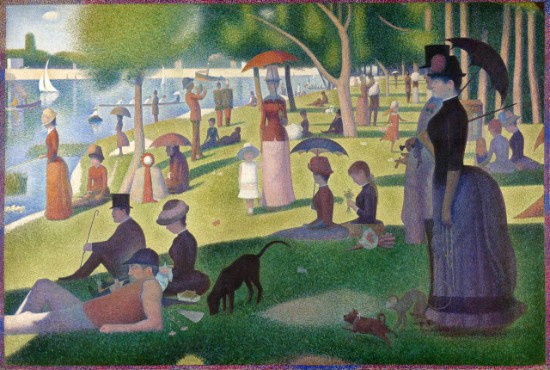
Georges Seurat, A Sunday on La Grande Jatte, 1884-1886. Oil on canvas, 207.5 x 308.1 cm.
Instead of dynamic spontaneous impressionistic brushstrokes laid in different directions, the painting contained clear strokes of the same shape and size, which had been laid next to each other. On canvas they made a sort of decorative mosaic.
It seemed that spontaneity and arbitrariness, the main working principles of the Impressionists, were replaced with order and a system; an exceptional alliance of art and science, probably the only one since Leonardo da Vinci. The author of the painting was the Neo-Impressionist Georges Seurat.
Henri de Toulouse-Lautrec
On the other side of Paris banks, near the avenue de Clichy, the wings of a red mill had started to turn: it was the beginning of the famous cabaret. There one could see people of the Parisian high society as well as characters from the very bottom.
While many were killing themselves in that little underworld drinking absinth and hiding in dark corners. Paintings of Henri Toulouse-Lautrec emerged as a rare representation of a unique Paris that did not exist before him and also disappeared after him.

Henri de Toulouse-Lautrec, At the Moulin de la Galette, 1889. Oil on canvas, 88.5 x 101.3 cm.
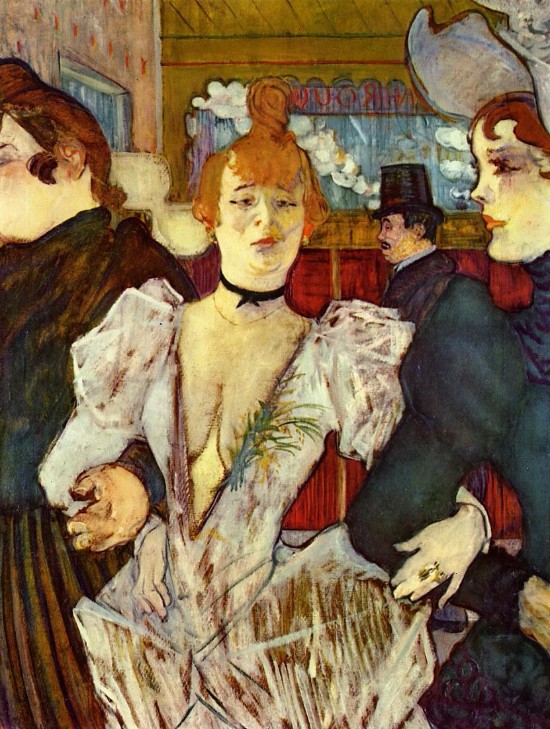
Henri de Toulouse-Lautrec, La Goulue Entering the Moulin Rouge with Two Women, 1892. Oil on panel, 79.4 x 59 cm.
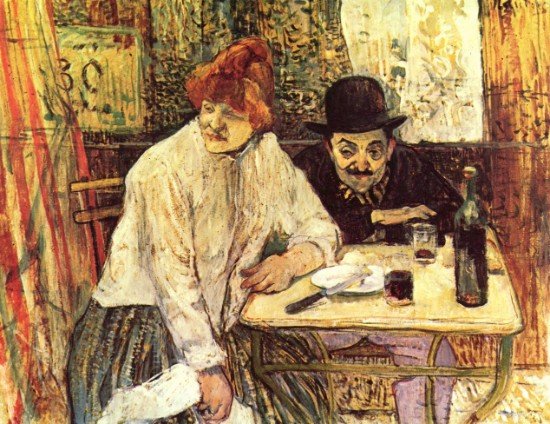
Henri de Toulouse-Lautrec, At the Café La Mie, c. 1891.
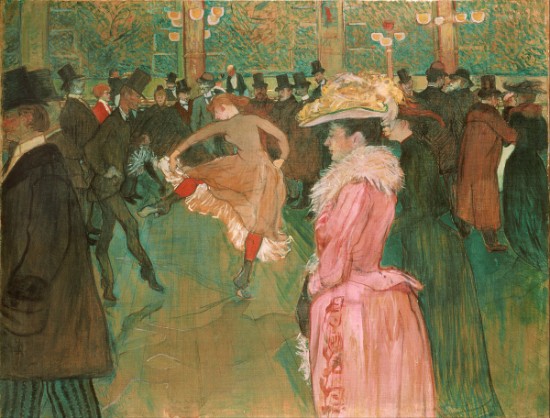
Henri de Toulouse-Lautrec, Valentin the Boneless Training of the New Girls at Moulin Rouge, 1889. Oil on canvas.
Vincent Van Gogh
While still living in Nuneen, his village in Holland, Vincent Van Gogh knew little about Impressionism. At the time when Impressionists were truly coming to the end of their shared artistic path, Van Gogh already had some idea as to where he wanted to go. His life was difficult and his desire to escape his Dutch village and move into the capital of art - Paris - was not that common around him.

Vincent van Gogh, Peasant Working, 1885. Oil on canvas, 42 x 32 cm.
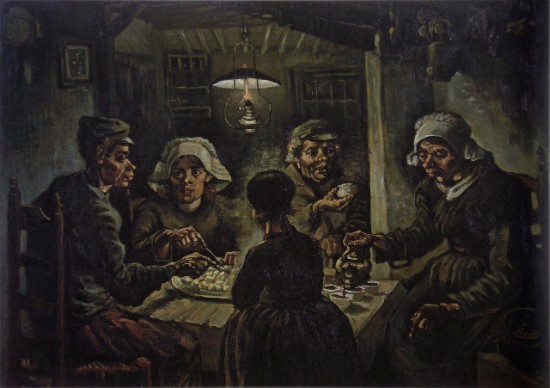 .
.Vincent van Gogh, The Potato Eaters, 1885. Oil on canvas, 82 x 114 cm.
At first his new style only seemed to be a zealous imitation of painters like Seurat. But gradually Vincent began to feel that the neo-impressionist technique did indeed offer new opportunities in painting light.
%2C%201888.jpg)
Vincent van Gogh, Café Terrace at Night (Place du Forum), 1888. Oil on canvas, 81 x 65.5 cm.
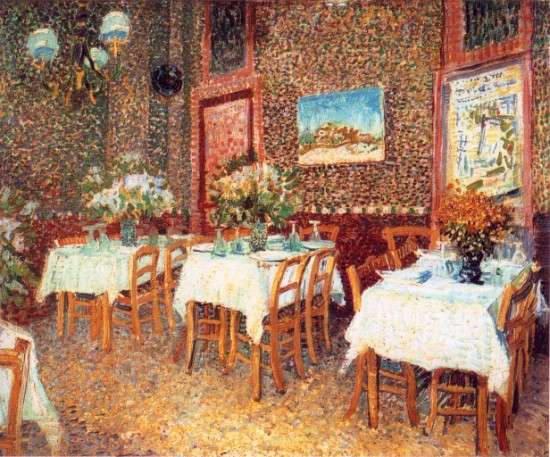
Vincent van Gogh, Interior of a Restaurant, 1887. Oil on canvas, 56.5 x 45.5 cm.
Nevertheless, Van Gogh fled Paris and went to Provence. Being a man of nature at the heart, he was captivated by the unusual beauty of the southern night sky, which he immediately pictured with the colors of his palette.
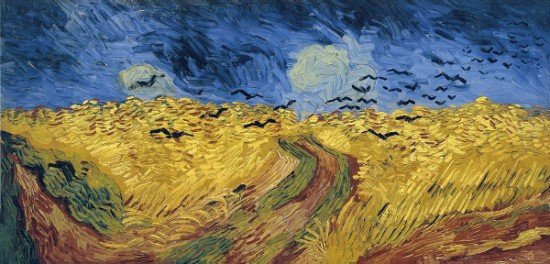
Vincent van Gogh, Wheat Fields with Crows, 1890. Oil on canvas, 50.5 x 103 cm.
Shining dark blue, stretched above tiny houses, the sky in his paintings was filled with that mysterious life beyond human perception. In a letter to his brother, he explained his fascination: “The stars and the moon are brightly wreathed, while celestial bodies move among one another in entangled spirals. And man appears small and helpless in the vortex of life in the universe.”
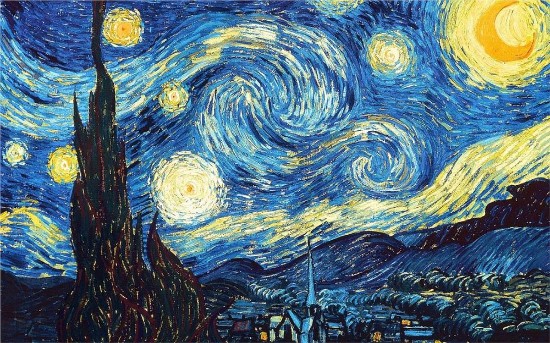
Vincent van Gogh, The Starry Night, 1889. Oil on canvas, 73.7 x 92.1 cm.
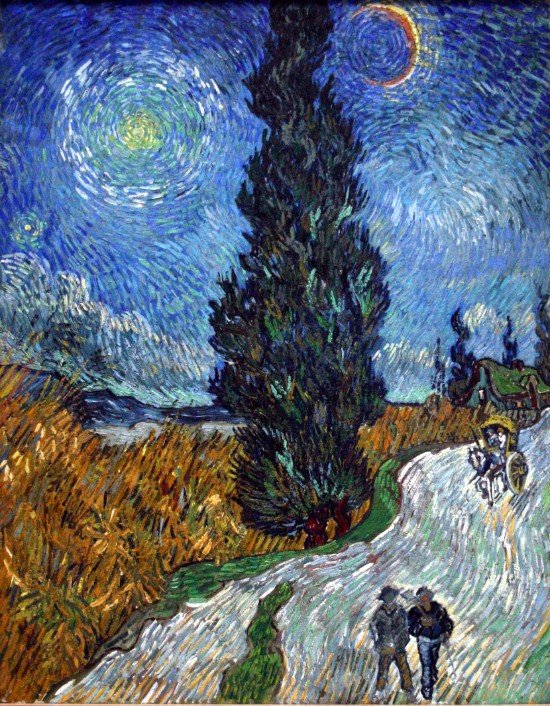
Vincent van Gogh, Country Road in Provence by Night, 1890. Oil on canvas, 92 x 73 cm.
Paul Gauguin
Paul Gauguin life story couldn’t be more fascinating. In his late thirties, he was a stockbroker who had everything set for a comfortable life, he then abandoned all of it and went to pursue his love of painting.
Having spent his early childhood in Lima, the city to which his family sailed at the end of the 1848 French Revolution, Gauguin kept wonderful memories from the six years he spent in the marvelous Peruvian climate.
His way of painting got rid of the Impressionists’ spontaneity and objectivity. Instead of the touches of color that looked split up on the canvas, he started to rigorously apply strong blocks of paint on hard materials like tree barks.
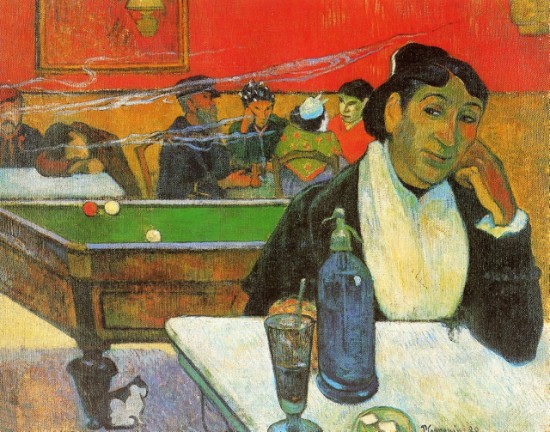
Paul Gauguin, Café in Arles, 1888. Oil on canvas, 72 x 92 cm.
His life obsession with the tropics ultimately led him to sail through the Indian Ocean in 1891. After a series of stops at the Seychelles, Australia and New Caledonia, Gauguin arrived in Tahiti’s capital: Papeete.
He was immediately seduced by Tahiti’s nature, its mysterious nights, and its inhabitants.
%2C%201892.jpg)
Paul Gauguin, Matamoe (Landscape with Peacocks), 1892. Oil on canvas, 115 x 86 cm.
%2C%201892.jpg)
Paul Gauguin, Fatata te Mouà (At the Foot of a Mountain), 1892. Oil on canvas, 68 x 92 cm.
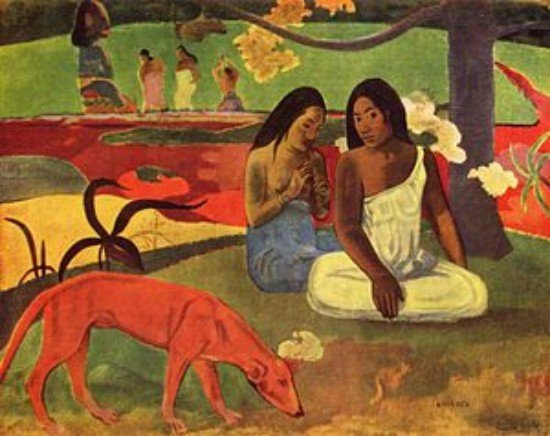
Paul Gauguin, Happiness, 1892. Oil on canvas.
Painting was Gauguin’s only language and one that was unconventional to people he grew up with. *Where do we come from? Where are we? Where are we going?* is one of his works that kind of summarizes his whole life and the adventures he experienced.
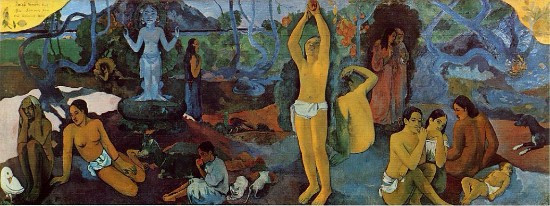
Congratulations @achraf7b! You have completed some achievement on Steemit and have been rewarded with new badge(s) :
Click on any badge to view your own Board of Honor on SteemitBoard.
For more information about SteemitBoard, click here
If you no longer want to receive notifications, reply to this comment with the word
STOP